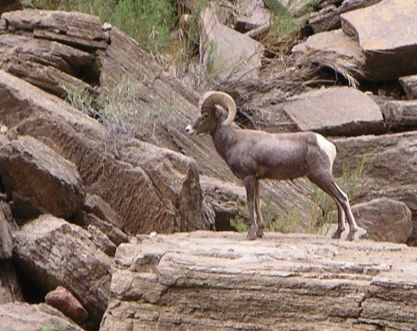
Bighorn sheep are well adapted for climbing and tend to populate river canyons or mountains with steep slopes where they have an edge over cougar and other predators. The desert bighorn is also well adapted for arid areas and can even be found in Death Valley.
While both sexes have horns, it is the heavy curl of the rams that give rise to the name. The rams can often be found at a good lookout spot apart from the ewes and lambs much of the year.
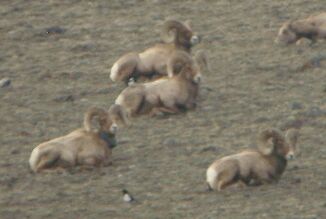
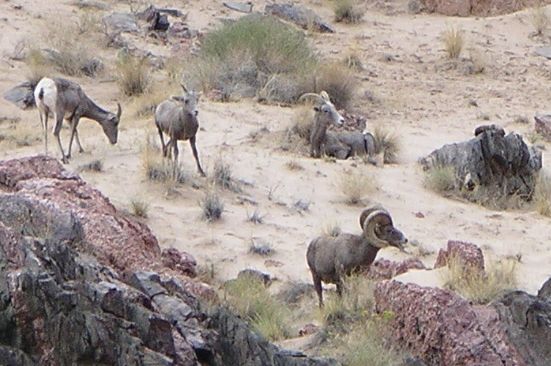
See examples of bighorn hooves, tracks, scat, and feeding sign.
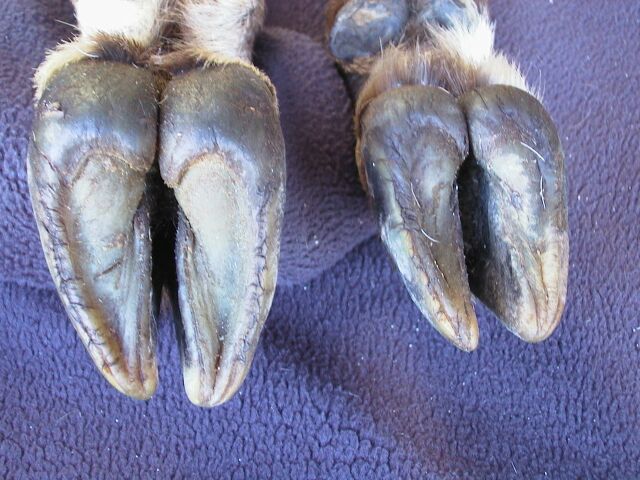

James Halfpenny suggests that the straighter wall of the clod is a good feature to distinguish bighorn tracks from deer and other ungulates. The tip of the clod tends to appear a bit more rounded and slightly splayed compared to deer.
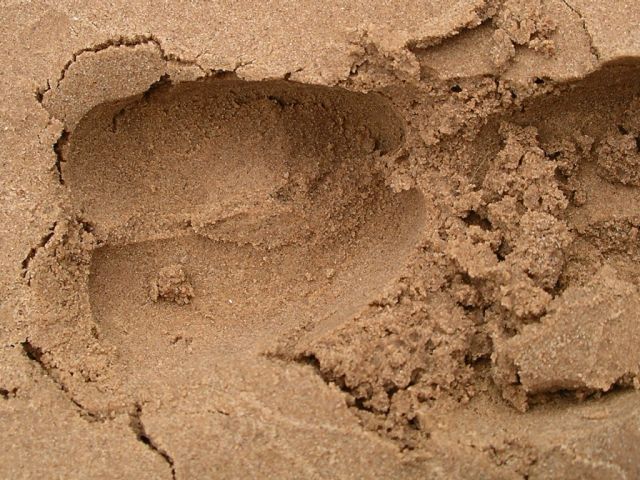
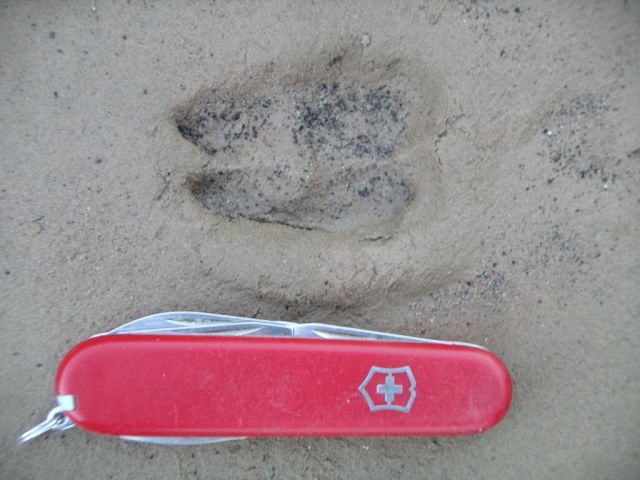
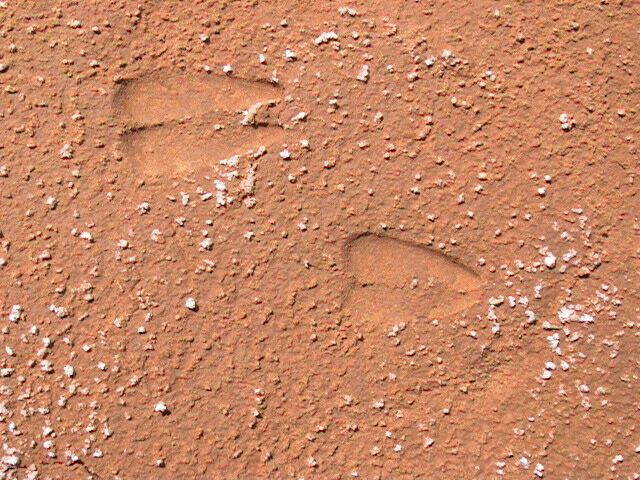
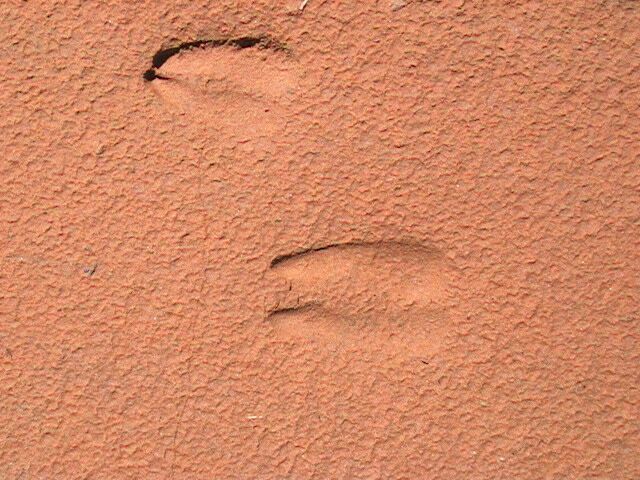
Ungulate scat is quite variable depending on diet and weather. In general bighorn scat are about the same size as deer scat but tends to have a point on one end of the pellet. Deer scat tends to be more elongated and usually has rounded ends.
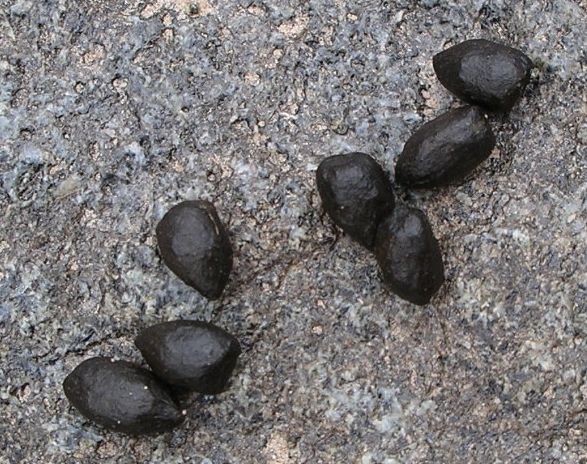
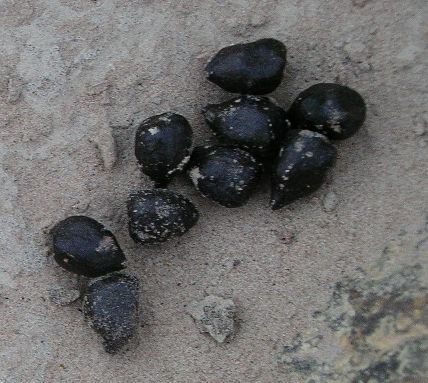
Deer track and scat for comparison.
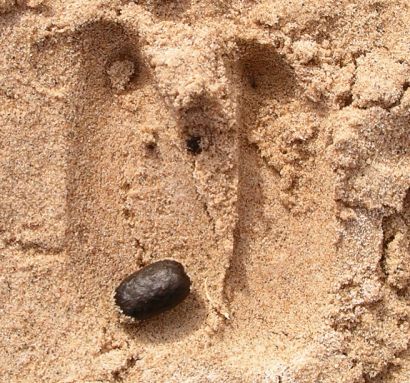 Feeding
Feeding
Bighorn eat a wide variety of forbs. They move along slowly, taking a bite here or there somewhat randomly, until they find a favorite plant.

They also do some browsing on shrubs or small trees like this willow sapling.
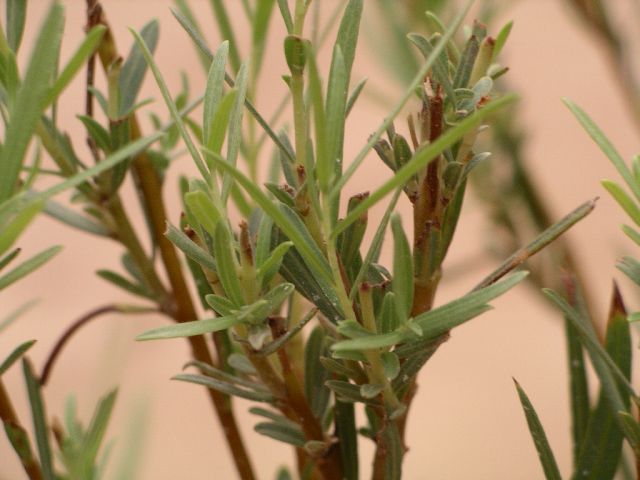 Return to Menu
Return to Menu